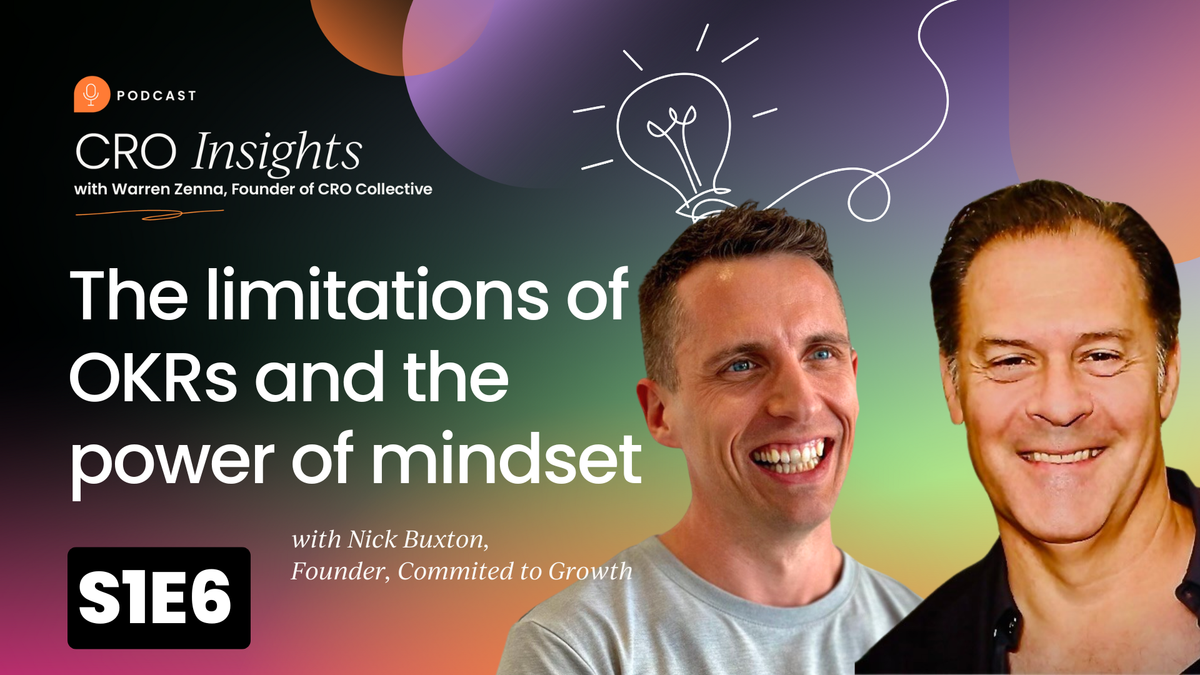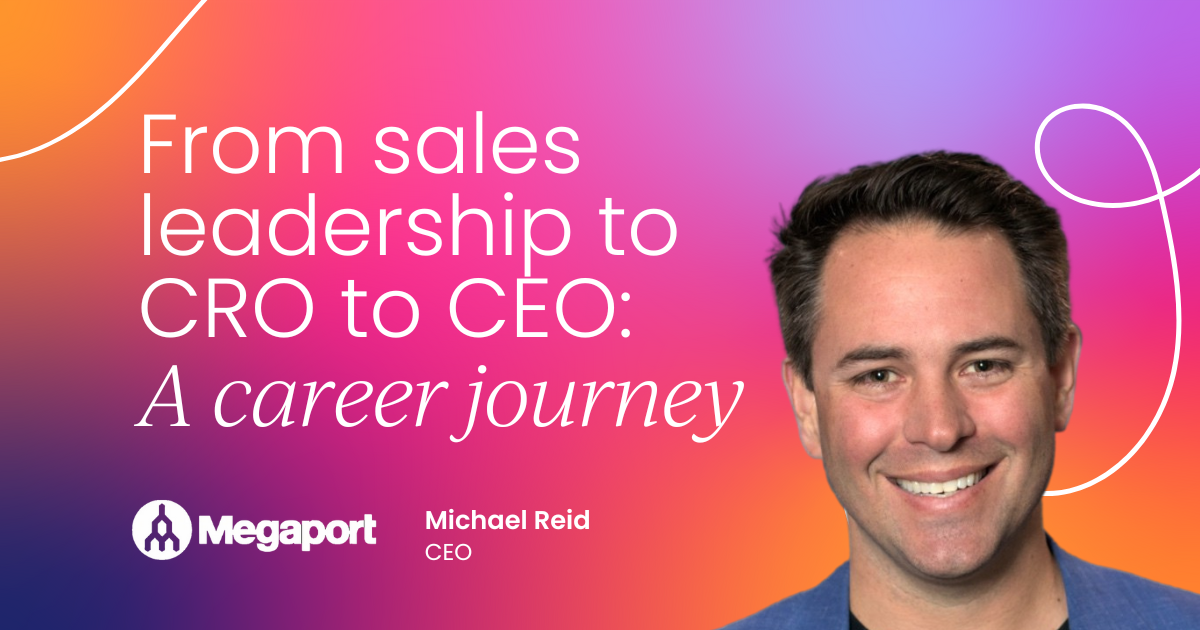Over the last few years, I’ve come to a pretty big realization: mindset is everything when it comes to driving sustainable growth in a revenue organization.
For most of my career, I focused on skills and behaviors – things like how to handle objections, write a solid follow-up email, price effectively, or close a deal. And sure, those are important. But I started noticing a pattern: people would apply these tactics for a couple of days, then fall back into old habits.
Why? Because behavior follows mindset. You can’t fix the external if the internal isn’t aligned.
You don’t just “get” the mindset you have – you build it
There’s this myth that people either have the right mindset or they don’t. That’s luck. You find someone born with it, and you win.
But it’s actually the other way around. You don’t succeed because you’ve got the body or the talent – you succeed because you’ve got the mindset that drove you to build those things.
Mindset fuels growth. It’s the difference between short-term performance and long-term transformation.
But changing someone's mindset is hard. It takes time, consistency, and a blend of different inputs – real feedback, the right environment, and sometimes a wake-up call about their impact on the business.

Mindset is a growth multiplier
When I step into an org, I look for a growth mindset in people – not just performance. In leadership sessions, I don’t always get to choose who's in the room, so my job is to spot those with the spark. I’ll give someone tough feedback. I’ll tell them their deal wasn't closed well. I watch how they respond.
- Do they ask how to get better?
- Do they seek clarity?
- Do they talk about what they’re learning?
That’s gold. Those are the people I double down on.
We’re not just trying to find people who want to succeed – we’re trying to find people who want to grow. And the challenge? Those people are often already winning somewhere else. You’ve got to offer more than money. You’ve got to offer meaning. People with a true growth mindset want to be part of something that activates that mindset.

Love and hiring well
Here’s a weird analogy that I find helpful: hiring is a bit like dating. The people we’d most love to bring on the journey often have options – and for good reason. They’re not chasing jobs; they’re choosing them. So how do we get them to pick us?
We have to give them a compelling vision of the future.
The best definition of love I’ve ever heard is a "shared vision of the future." And it’s the same in business. When someone chooses to lend you their career, they need to believe in your vision. They need to see who you are, what you stand for, and where you’re going. If you're not clear on those things, why would someone so talented come along for the ride?

Boom and bust leadership
I used to be the classic boom-or-bust sales leader. When we were smashing the target, I was flying high – “we're on it, nothing can stop us.” I’d tell myself, “All the stuff we’ve done has led us to this moment. I'm great. This is brilliant.”
But the moment we missed, it felt like the worst thing ever. I was so deep in it, I couldn’t zoom out to ask the right questions:
Is the target even realistic? What’s actually going wrong here? Is it me? The market? The process?
I couldn't see the wood for the trees. It was all just noise and pressure.
That intense, number-obsessed mindset didn’t serve me – or the team – well. The shift happened when I stepped sideways into broader leadership. That’s when I saw how siloed thinking kills momentum and alignment. It’s not just about smashing revenue targets – it’s about understanding why things break and how to build systems that don’t fall over every time something shifts.
Structure is furniture. Culture is the room.
Too often, companies focus on rearranging org charts like furniture. And sure, it feels satisfying – you can see the change. You move a couch, it looks better. Job done.
But if the people in the room don’t trust each other, don’t share a mission, and don’t communicate? It doesn't matter where the couch goes.
That’s exactly why I started Committed to Growth – not just to help companies build another revenue team, but to break down the silos that strangle real growth. We’re all often too focused on what’s easy to fix – restructures, headcount plans, tech stacks – because they’re visible and measurable. But if you don’t solve the people and leadership dynamics, it’ll all fall over again.
The harder – but more impactful – work is helping teams align on how the room is used, not just how it’s laid out. That’s what changes the game.
Turn off the tap, don’t just mop the floor
A lot of businesses are stuck in cleanup mode. Something breaks, so we scramble to fix it – hire more, launch a new process, close a few fast deals. But that’s just mopping up water from the floor.
We haven’t turned the tap off.
Turning off the tap requires stepping back, looking at the root cause, and shifting not just the system – but the mindset that created it. It’s not just about operational change. It’s about asking uncomfortable questions like:
Why are we doing it this way? Who does this actually serve? What would it look like to think differently?
Sometimes the answer is a new hire or a new plan. But often, it’s a cultural reset. And not everyone’s ready for that. Some people like how things are – even if they’re not working. But if you want to grow without burning capital or people out, something’s got to give.
Final thoughts
At the end of the day, the biggest breakthroughs in revenue leadership don’t come from new tools, faster cadences, or clever re-orgs. They come from shifting the way we think. Growth isn’t just about what you do – it’s about how you see the problem in the first place.
If you’re a CRO leading a team through change, under pressure to scale, or stuck in firefighting mode, take a step back. Ask yourself: are we mopping the floor, or are we turning off the tap? Are we just rearranging the furniture, or are we building a room people actually want to work in?
It’s our job to ask the BIG questions that'll really solve the challenges in our businesses.
I’ve seen firsthand how powerful that mindset shift can be. For individuals, for teams, and for entire organizations. It’s not always easy work. But it’s the kind that sticks.
Because when mindset changes, everything else follows.
This article comes from Nick Buxton’s brilliant episode of CRO Insights with host Warren Zenna. Check out their full discussion and the wealth of expert CRO wisdom waiting for you in our other episodes.


 6 min read
6 min read
 Follow us on LinkedIn
Follow us on LinkedIn






